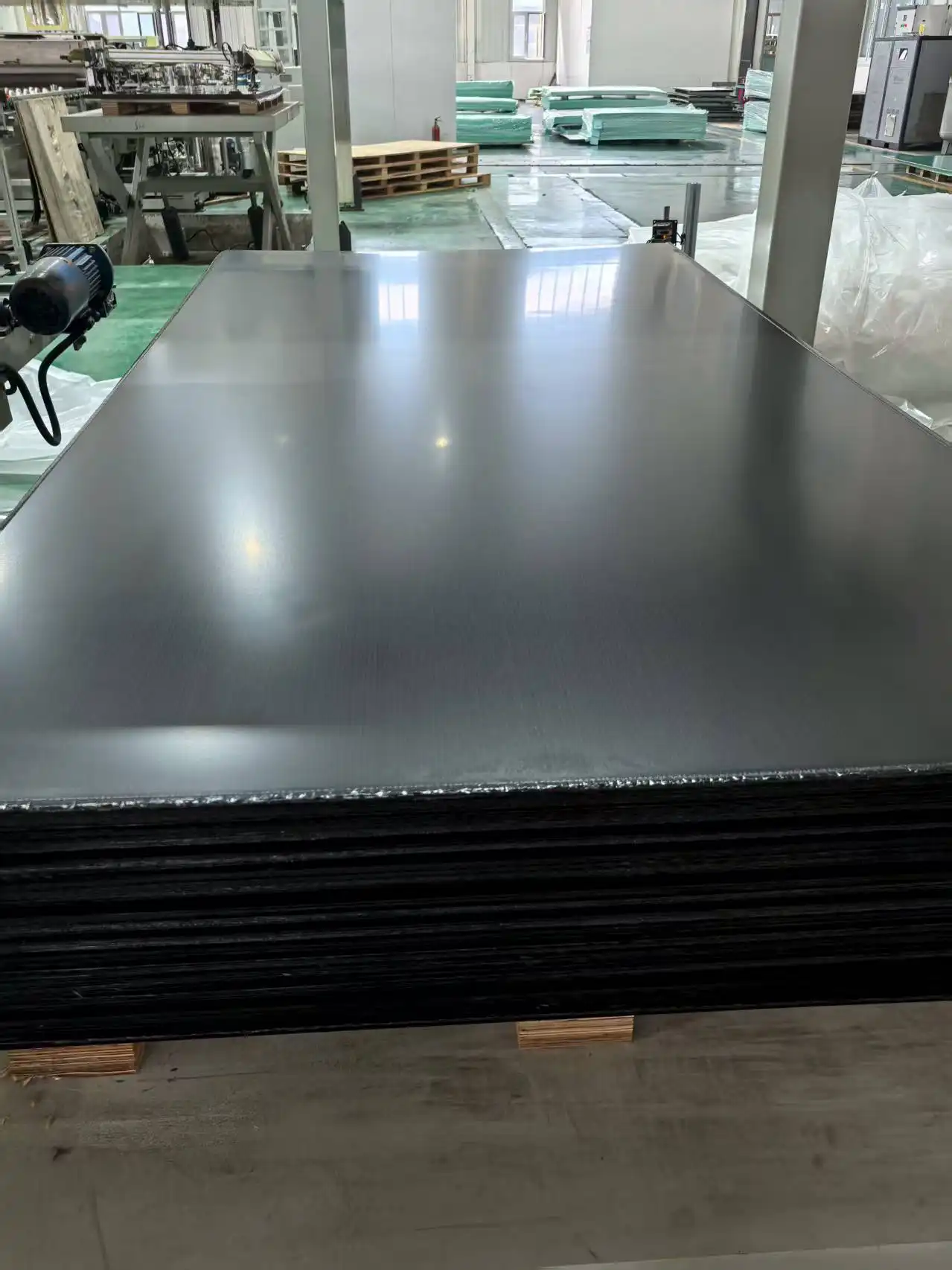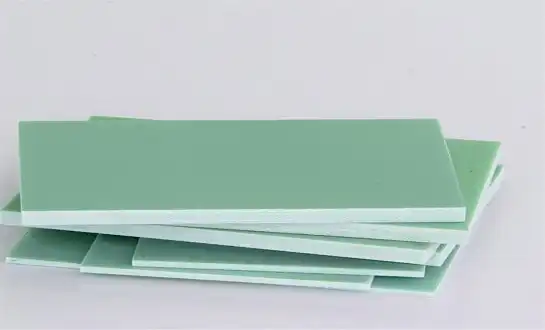How G10 ESD Epoxy Board Protects Against Electrostatic Discharge?
Surface Resistivity Control
G10 ESD epoxy board is engineered with precise surface resistivity to effectively manage static charge buildup. Typically ranging from 10^6 to 10^9 ohms per square, this resistivity allows static charges to dissipate in a controlled manner. It prevents sudden discharge events that could damage sensitive electronic components while still neutralizing potentially harmful static accumulation. By maintaining this balance, the material ensures reliable protection for electronics during handling, assembly, and operational use in ESD-sensitive environments.
Charge Decay Mechanisms
The ESD-enhanced epoxy matrix in G10 boards contains conductive additives that create pathways for safe charge migration. When static electricity accumulates on the surface, these pathways enable gradual dissipation, preventing damage to electronic circuits. Charge decay is measured by the time required for a 5000V charge to reduce to 50V, which is typically under 2 seconds in quality G10 ESD materials. This rapid yet controlled decay ensures that sensitive components remain protected in fast-paced manufacturing or laboratory environments.
Triboelectric Neutrality
G10 ESD epoxy boards are formulated to minimize triboelectric charging, reducing the generation of static through friction or contact with other materials. The surface chemistry of the board lowers the tendency for charge buildup during material handling or movement in manufacturing processes. This triboelectric neutrality is especially critical in environments with frequent mechanical interactions, ensuring that sensitive electronics are protected from unexpected electrostatic events. The material’s ability to prevent charge generation complements its other ESD protection mechanisms for comprehensive static control.
Key Properties of G10 ESD Epoxy Board for Precision Electronics
Electrical Characteristics
In addition to its ESD protection capabilities, G10 ESD epoxy board offers excellent electrical insulation performance. It provides a dielectric strength exceeding 20 kV/mm, ensuring reliable isolation even in high-voltage applications. With a low dielectric constant of approximately 4–5 at 1 MHz and a dissipation factor around 0.025 at 1 MHz, it supports high-frequency electronic circuits with minimal signal loss. These electrical properties make G10 ESD boards ideal for precision electronics, RF components, and other sensitive electrical applications requiring stable insulation.
Mechanical Strength and Stability
G10 ESD epoxy board is recognized for its outstanding mechanical strength and dimensional stability. It exhibits flexural strength typically above 480 MPa and compressive strength exceeding 415 MPa, making it robust enough to withstand mechanical stress during fabrication and operation. The low coefficient of thermal expansion (14–16 ppm/°C) ensures that the board maintains precise dimensions across wide temperature variations. This stability is essential for high-precision electronic assemblies, where even slight deformation could affect performance, tolerances, or component alignment.
Environmental Resistance
G10 ESD epoxy board maintains its electrical and mechanical properties under harsh environmental conditions. It can operate reliably across a temperature range from -40°C to 130°C, with minimal water absorption (less than 0.1%), which preserves insulation performance and structural integrity in humid conditions. Furthermore, the material resists a broad spectrum of chemicals and solvents, making it suitable for diverse industrial and laboratory environments. Its combination of thermal, moisture, and chemical resistance ensures long-term reliability in precision electronic applications.
G10 ESD Epoxy Board Applications in Semiconductor and Control Systems
Printed Circuit Board Substrates
In the semiconductor industry, G10 ESD epoxy board serves as an ideal substrate for printed circuit boards (PCBs) in ESD-sensitive applications. Its controlled surface resistivity allows for the creation of PCBs that inherently protect against static discharge, reducing the need for additional ESD protection components. The material's excellent dimensional stability ensures precise layer alignment in multilayer PCBs, critical for high-density interconnects in advanced semiconductor packages.
Component Carriers and Fixtures
G10 ESD epoxy board is extensively used in manufacturing fixtures and component carriers for semiconductor assembly. Its combination of mechanical strength and ESD protection makes it perfect for creating trays, holders, and jigs that safely transport and position delicate integrated circuits and other static-sensitive devices. The material's machinability allows for the creation of precise, custom-designed fixtures tailored to specific component geometries.
Control Panel Insulation
In industrial control systems, G10 ESD epoxy board finds application as insulating panels and backplanes. Its high dielectric strength coupled with ESD protection properties make it ideal for isolating high-voltage components while safeguarding sensitive control circuitry. The material's flame retardancy (often meeting UL94 V-0 standards) enhances safety in electrical enclosures and control panels across various industries.
Conclusion
G10 ESD epoxy board represents a significant advancement in materials technology for static-sensitive electrical components. Its unique blend of mechanical robustness, electrical insulation, and controlled static dissipation properties make it an invaluable material in modern electronics manufacturing and high-precision industrial applications. As the demand for more compact and sensitive electronic devices continues to grow, the role of specialized materials like G10 ESD epoxy board in ensuring reliability and performance becomes increasingly critical.
FAQs
What makes G10 ESD epoxy board different from standard G10?
G10 ESD epoxy board incorporates conductive additives to provide electrostatic discharge protection while maintaining the mechanical and electrical properties of standard G10.
Can G10 ESD epoxy board be machined easily?
Yes, G10 ESD epoxy board can be machined using standard tools and techniques, allowing for custom shapes and precise tolerances.
Is G10 ESD epoxy board suitable for outdoor applications?
While resistant to many environmental factors, prolonged UV exposure may affect its properties. For outdoor use, additional protective measures may be necessary.
Expert G10 ESD Epoxy Board Solutions from J&Q
At J&Q, we leverage over 20 years of experience in insulating sheet production to deliver superior G10 ESD epoxy board solutions. Our global expertise and dedicated foreign trade team ensure seamless service for clients worldwide. With our integrated logistics capabilities, we offer comprehensive support from material selection to delivery. For tailored G10 ESD epoxy board solutions, contact our specialists at info@jhd-material.com.
References
Smith, J. (2021). Advanced Materials for ESD Protection in Electronics Manufacturing. Journal of Applied Polymer Science, 138(15), 50321.
Johnson, R. et al. (2020). Characterization of G10 ESD Epoxy Composites for High-Reliability Electronics. IEEE Transactions on Components, Packaging and Manufacturing Technology, 10(3), 457-465.
Chen, L. (2019). Innovations in ESD-Safe Materials for Semiconductor Packaging. Microelectronics Reliability, 91, 306-314.
Thompson, A. (2022). Electrostatic Discharge Protection Strategies in Modern Electronics Design. International Journal of Electrical Engineering & Technology, 13(3), 140-152.
Wilson, M. (2020). Performance Evaluation of G10 ESD Epoxy Board in Harsh Industrial Environments. Industrial & Engineering Chemistry Research, 59(22), 10456-10463.
Lee, K. et al. (2021). Advancements in ESD-Safe Composite Materials for Next-Generation Electronics. Composites Science and Technology, 201, 108534.






